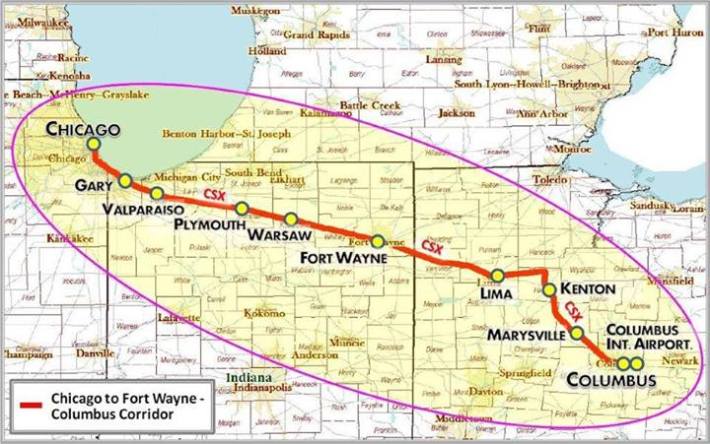Columbus, Ohio, population 800,000, is among the biggest U.S. cities without passenger rail. But its time may have finally come.

A college town and state capital, Columbus has bucked the trend of urban decline in Ohio and built a strong economy on insurance and retail. The culture here has been famously resistant to rail plans, but it's a young city that's becoming more and more progressive. Columbus has seen major growth in its core urban neighborhoods in recent years.
Now city leaders are throwing their support behind a new plan to create a rail link from Columbus to Chicago via Fort Wayne, Indiana. A study by the Northeast Indiana Passenger Rail Association [PDF] makes it seem like a pretty sweet deal. The group estimates that the cost of linking the three cities on existing freight rail lines would be about $1.3 billion -- about one-tenth the price of connecting the two cities by highway. The group estimates the trains could travel between 110 and 130 miles per hour, completing the 355 mile trip in under four hours, making it competitive with flying and driving. The project, they estimate, would generate $1.70 for every $1 invested and would create up to 26,800 permanent jobs.
As for where the money would come from, that's an open question. But some rail advocates are optimistic that the proposal has strong enough market potential that at least part of it could be privately funded. NIPRA estimates the system could draw $116 million in fares in the year 2020. And if population growth continues as projected, annual fare revenue could rise to $190 million by 2040.
Vince Papsidero, Columbus’s planning administrator, told the Columbus Dispatch: “This actually could be profitable.”
That said, this is still a far-away dream. The city of Columbus backed the initial study with $20,000. Proponents are trying to raise $2 million for an engineering study. After that, they'd need $10 million from the feds for an environmental impact study.
Plus, the state of Ohio is broke, and the governor hates trains.
Ken Prendergast at All Aboard Ohio points out that other states that rejected federal rail money -- Florida and Wisconsin -- are now pursuing expansion of their systems. Will Columbus's interest in passenger rail be enough to bring new rail service to Ohio too?





